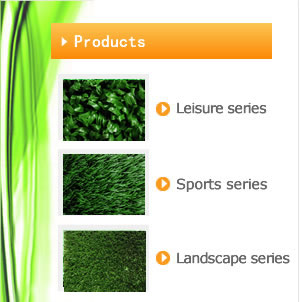
To facilitate the laying of artificial turf, low maintenance cost, subject to site conditions and other advantages, in the country has been applied to a growing number of recreational venues.
Artificial grass by three layers of materials. Base layer is made of compacted soil, gravel and asphalt or concrete layer. Requires a solid base layer, no distortion, smooth and impervious surface, which generally concrete venue. Due to the large area hockey venue, must handle the construction of the base layer, to prevent subsidence. If laying concrete layer after curing concrete expansion joints to be cut out, to prevent thermal expansion deformation and cracks.
Above the base layer is a buffer layer, usually composed of a rubber or foam. Rubber elastic medium, thickness 3 ~ 5mm. Foam with a lower cost, but the flexibility is poor, the thickness of 5 ~ 10mm, thick grass is too soft, and easy to depressions; too thin lack of elasticity, will not achieve buffer. The buffer layer to be securely attached to the base layer, usually with white latex or all-purpose adhesive paste.
The third layer is the surface layer for the divot. According to the surface shape manufacturing plush turf, circular curled nylon turf, turf leafy polypropylene fibers, nylon yarn preparation permeable turf like. This layer must also be used in a rubber or foam adhesive on milk. Must be fully rubberized, followed by pressure against the construction firm, not wrinkled.
Artificial turf foundation classified as:
1. Asphalt concrete foundation: good strength and ductility, is an ideal basis for a larger area and the temperature difference between the cold northern climate is particularly suitable, but expensive; ordinary bitumen (asphalt base often choose to do, the price is slightly cheaper); hydrophobic bitumen (too costly, complex construction, use less).
2. Cement foundation: strength, economical and practical, suitable temperature difference smaller area, but poor ductility;
3. Cement powder foundation: short duration, low cost, good drainage properties, but poor weather, easily oxidized, resulting in uneven;
4. Hydrophobic gravel foundation: the lowest cost, good drainage performance, but more difficult to control the flatness problem more.